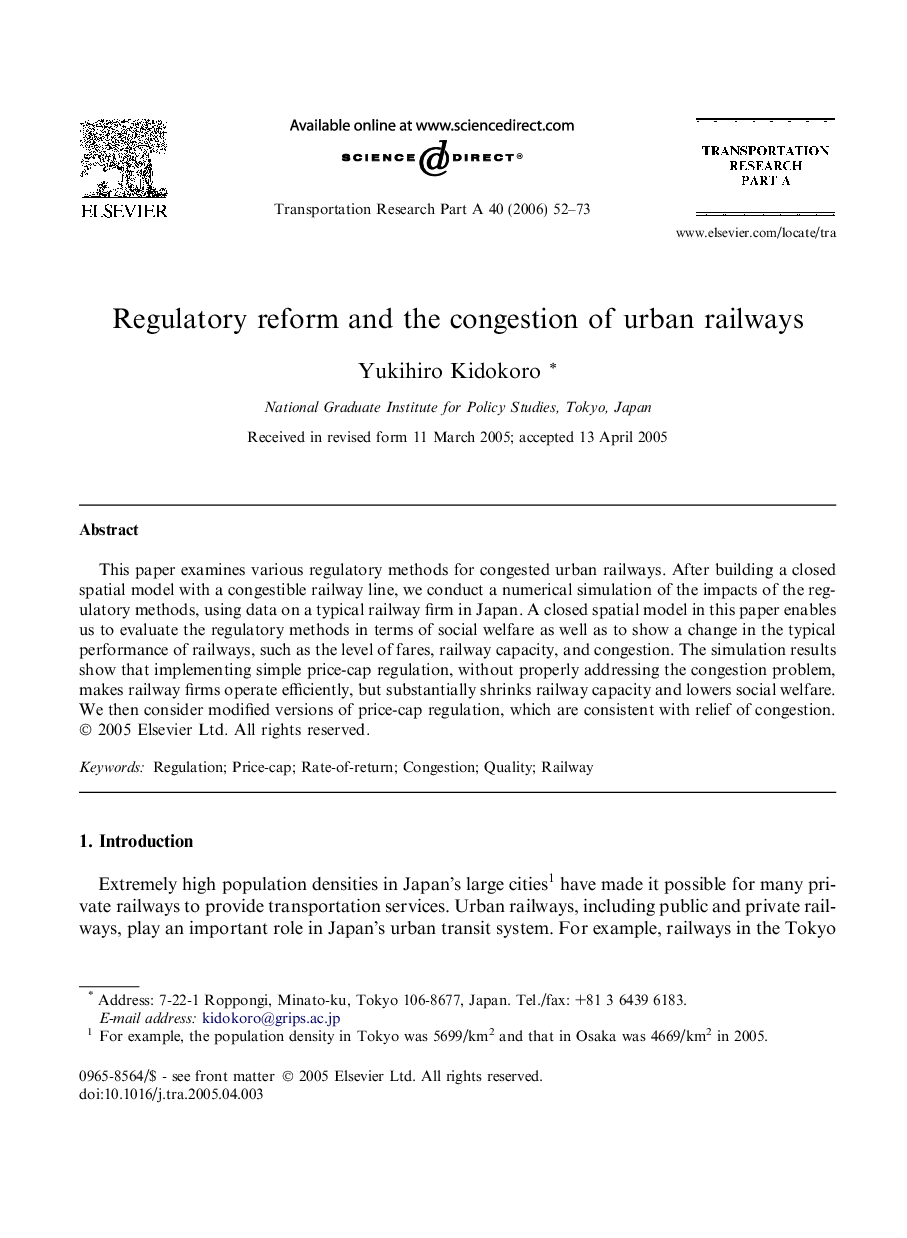| Article ID | Journal | Published Year | Pages | File Type |
|---|---|---|---|---|
| 311715 | Transportation Research Part A: Policy and Practice | 2006 | 22 Pages |
This paper examines various regulatory methods for congested urban railways. After building a closed spatial model with a congestible railway line, we conduct a numerical simulation of the impacts of the regulatory methods, using data on a typical railway firm in Japan. A closed spatial model in this paper enables us to evaluate the regulatory methods in terms of social welfare as well as to show a change in the typical performance of railways, such as the level of fares, railway capacity, and congestion. The simulation results show that implementing simple price-cap regulation, without properly addressing the congestion problem, makes railway firms operate efficiently, but substantially shrinks railway capacity and lowers social welfare. We then consider modified versions of price-cap regulation, which are consistent with relief of congestion.
